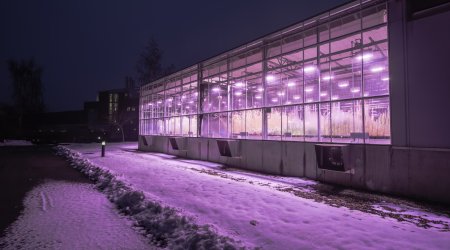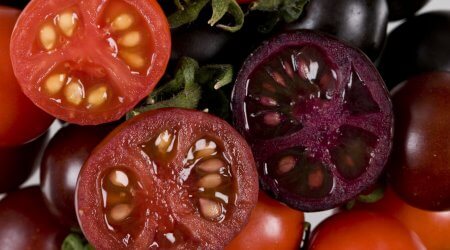Close collaboration between scientists, conservationists and crop breeders is vital to prepare for the potential re-emergence of stem rust in the UK
Among efforts to safeguard cereals is a partnership between John Innes Centre researchers and Butterfly Conservation naturalists who have started monitoring the location of common barberry (Berberis vulgaris). The hedgerow shrub has increased in popularity over recent decades and has been widely planted in conservation efforts to preserve the barberry carpet moth, an endangered species that relies on barberry as a habitat and food source.
However, common barberry has another altogether more threatening role as an alternate sexual host for stem rust, a pathogen that has been associated with crop failure and famine throughout history.
Following a report by Dr Diane Saunders and Dr Brande Wulff from the John Innes Centre of a single wheat plant infected with stem rust in Suffolk – the first case in the UK in more than 60 years – and an outbreak of wheat stem rust in Sweden that has been linked to barberry, it may be timely to recall the uncompromising historical approach to the hedgerow shrub.
It is thought that barberry was introduced to England around 500 years ago. It was then ripped from the landscape, a process which began around 300 years ago when farmers noticed links between its presence near fields and crop disease. In the United States in the early 20th century, barberry was the focus of a major state and federal-supported policy of mass removal in a campaign billed ‘The Barberry or Bread’.
Fast forward a century and a proactive and precautionary approach is being adopted in the light of recent developments in the UK. This approach balances the needs of crop protection and wildlife conservation and is supported by scientific research.
Dr Diane Saunders said, “Right now we do not have wheat stem rust, as far as we know, established in this country, so to make dramatic decisions like ripping out all the barberry bushes is not something we would support. But what we can do is to be proactive and prepare for the future by documenting the location of barberry bushes. Then, if wheat stem rust does re-emerge, we can remove them if necessary but only from areas where they could cause an issue in escalating cereal rust diversity.”
The proactive approach aligns with that of Butterfly Conservation as part of Natural England’s Back from the Brink programme.
The infected wheat plant discovered in Suffolk was shown to be infected by the Digalu race the fungus, which was responsible for a devastating outbreak of stem rust in Ethiopia in 2013 and smaller outbreaks in Sweden, Denmark and Germany in the same year. Follow-up investigations found that over 80% of UK wheat varieties tested are susceptible to the strain of the pathogen found in Suffolk.
Further analysis by Dr Daniel Bebber at Exeter University showed that changes in climatic conditions over the past 25 years suggest increasingly conducive conditions for fungal pathogen growth and infection. On cereal crops, stem rust undergoes asexual reproduction using the plant’s own resources to produce millions of genetically identical spores. The type of spores it generates on cereals can travel thousands of kilometres on the wind. However, when barberry is next to a cereal, the pathogen uses it as an alternate host to complete its sexual cycle, potentially leading to a swathe of new genetic strains.
Fortunately, the spores that form on barberry likely only travel relatively short distances. For a barberry bush to spread rust to a cereal field they must be in close proximity. However, the exact safe distance is unclear in the current literature. Research underway in Dr Saunders’ team, and funded by the core institute strategic programmes at the John Innes Centre, is starting to address key questions such as determining the safe distance between barberry bushes and cereal crops.
Proactive steps must also involve working with breeders to identify sources of resistance within current UK wheat lines which could be introduced into crops, says Dr Saunders.
A number of funding initiatives are being explored to make this proactive approach more effective and broader to include citizens scientists and partners from leisure and tourism.
“Funding permitted, we’d like to get the public involved,” said Dr Saunders. “A lot of these bushes are in areas where people go for walks and they could easily report locations using a mobile app and upload pictures of rust infecting barberry. Then we’d see if it was something that would be useful to go out and sample and thereby better target our resources.
“With the recent outbreaks of wheat stem rust across Europe it is important we take these early warning signs seriously, take stock and put an informed response plan in place should the worst happen and wheat stem rust re-establishes here,” she added.





